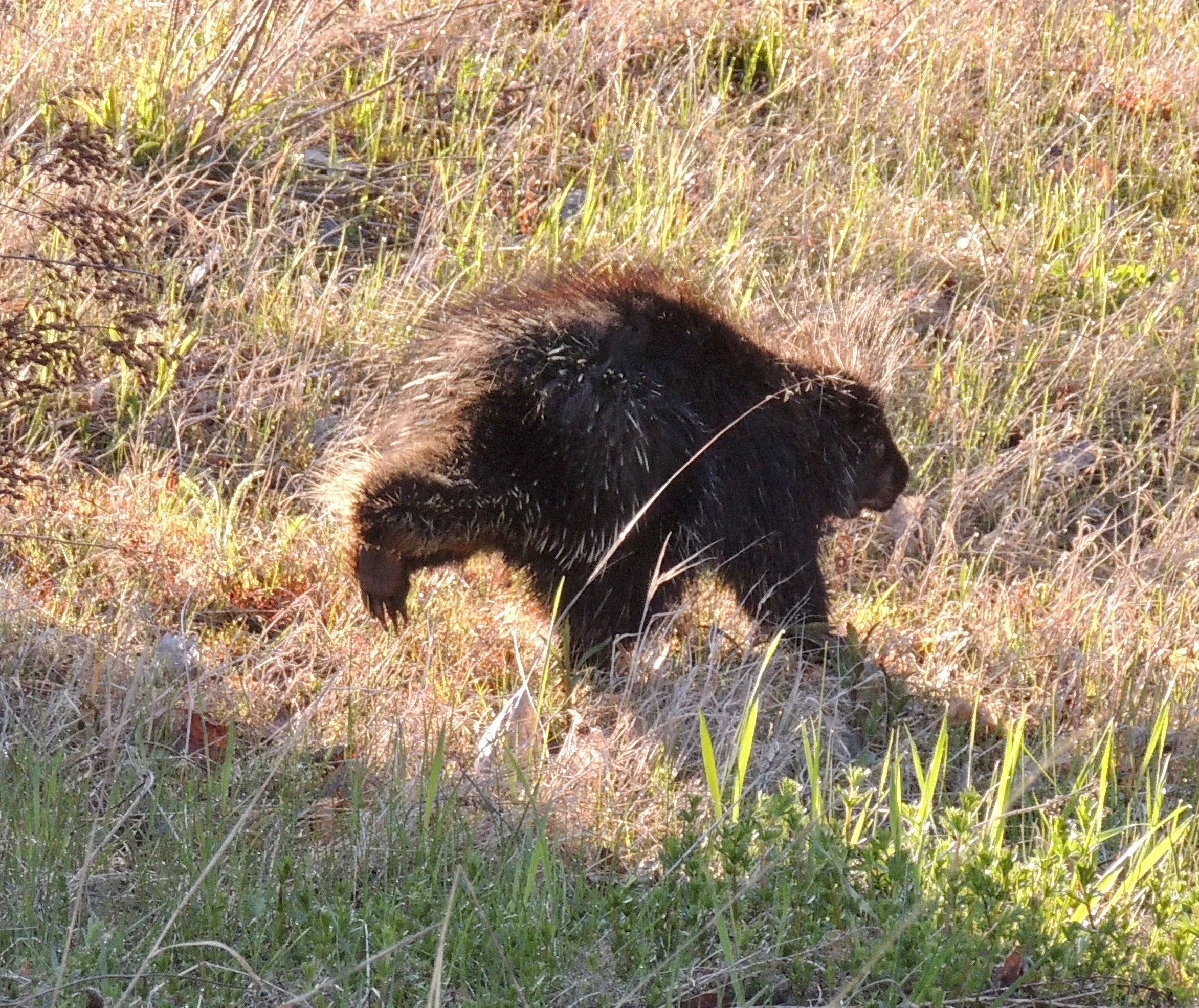Into the Woods with Curio: Porcupines are Loners
Doug Smith
“Where can I go from your Spirit? Where can I flee from your presence?... If I say, “Surely the darkness will hide me and the light become night around me,” even the darkness will not be dark to you; the night will shine like the day, for darkness is as light to you.”
Psalm 139:7, 11&12
It sounded like a small child was fussing, but it couldn’t be. Arriving home in the dark, I heard it as soon as I exited the car. What a strange sound. I grabbed a flashlight from the house and looked around, still hearing it, but not finding the source. It was a mystery. The next morning the answer was sitting in the neighbour’s tree – a large, black porcupine!
Now that the leaves are off of the deciduous trees, there is a better chance of seeing a porcupine.
They are not uncommon in Muskoka, and at camp. November is also the month that porcupines breed, hence the sounds – it was a female looking for a mate. Breeding season is the only time porcupines purposely meet other porcupines. Porkies are loners by nature.
They can survive on their own because of their impressive defence mechanism -- over 30,000 quills, extending from the top of their head to the tip of their tail. Any would-be predator, (or overzealous dog) that tries to attack a porkie usually ends up with a painful surprise. Porkies don’t shoot their quills at attackers, but simply keep their backs to them, letting the loosely attached quills come away if the attacker is too aggressive. While it is dealing with the nasty shock of quills embedded in its face and body, the porky makes its escape up a nearby tree.
The list of potential predators of porkies is a short one, and includes bobcats, lynx, mountain lions, coyotes, wolves, great horned owls and fishers. In Muskoka they only really have to worry about fishers, and people. Because their defence strategy has no effect on cars, porkies are often hit when crossing roads at night. They are actually nocturnal because there is more nutrition from trees at night, biologists have discovered.
They spend a lot of time in trees, not only for safety but for food, feeding on leaf buds in season, acorns and apples, and the tree’s inner bark at this time of year. They’ll also eat canoe paddles, wooden-handled tools, and even gnaw on the wooden siding on a house. They don’t hibernate, but try to stay off the snowy ground, as, like their larger cousin the beaver, they don’t move fast on land.
Come spring the female gives birth to just one little porky. By next November that young one will be on its own. If it’s a male it may stay around the neighbourhood, though will be chased off by larger, older males, including his dad, during the breeding season. That may be the only time it sees its dad, as Mom is always a single parent. If the young one is a female she has to venture out on her own to find her own territory, as her mom won’t tolerate her sticking around. Porcupines really are on their own.
While we may choose to be alone, or sometimes we may feel alone, we don’t have to be, as Christ has promised to always be with us, no matter where we are.
